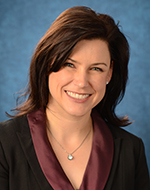Page Content
Alberta’s contingent: Back row (L-R): Katherine Pritchard, Monique Gravel, Michelle Glavine, Andrea Berg, Carmen Glossop, Heide Doppmeier, Shelley Magnusson.
Front row (L-R): Markiana Cyncar-Hryschuk, Heather Quinn, Shannon Dube.
 Over its 100-year history, the ATA has had only eight female presidents out of a total of 58. The ATA has never had a female executive secretary. These facts resonate in teacher organizations across the country. Of the 18 provincial and territorial teacher organizations, only four currently have a female president. With approximately 74 per cent of Canadian teachers being female, the majority of members are grossly underrepresented by gender in their professional associations.
Over its 100-year history, the ATA has had only eight female presidents out of a total of 58. The ATA has never had a female executive secretary. These facts resonate in teacher organizations across the country. Of the 18 provincial and territorial teacher organizations, only four currently have a female president. With approximately 74 per cent of Canadian teachers being female, the majority of members are grossly underrepresented by gender in their professional associations.
In 2009, when she first became president of Palliser Local No. 19, Katherine Pritchard noticed a stark absence of female photographs in the ATA News spread that listed all the local presidents and district representatives. Now the Southwest district representative, Pritchard is encouraged to see that the number of female local presidents has increased, but she has a simple summation when it comes to female representation in leadership positions across the Alberta Teachers’ Association: “We’re not there yet.”
Pritchard was among a small but dedicated
Alberta delegation of district representatives, local presidents and ATA executive staff who travelled to Charlottetown to attend the annual Canadian Teachers’ Federation (CTF) Women’s Symposium from May 6 to 9.
The symposium’s aim was to help attendees better understand the barriers preventing women from attaining leadership positions. Participants from teacher organizations across the country gathered to hear from inspiring leaders and exchange ideas for strengthening the status of women in the teaching profession.
Heather Quinn, president of Edmonton Public Local No. 37, attended the event and said she appreciated the opportunity to learn about where each provincial association is with their initiatives to support women in leadership.
Several delegates I spoke to said a highlight was the talk by Lily Eskelsen-Garcia, president of the American National Education Association (NEA). Eskelsen-Garcia challenged the traditional stereotype of women as soft and powerless nurturers and caregivers. She encouraged delegates to tap into the “awesome” power of the collective voice to make change.
The need for women to support and empower each other was a message echoed throughout the event. A panel with inspiring teacher leaders from across the country shared their perspectives on the significance of the #MeToo movement and their respective journeys to leadership.
ATA staff officer Shelley Magnusson challenged delegates to take small steps to be 10 per cent braver in their own pursuits of leadership. Because of the collective power of #MeToo, in which women can find support in each other through sharing common experiences, a public discourse about sexual harassment and women’s equity has now been initiated. One panellist emphasized, “The only way we are going to help change society is if we all stand together.”
Following the symposium, Edmonton-McMurray district representative Markiana Cyncar-Hryschuk reflected on her own path to leadership.
When it comes to female representation in leadership positions across the Alberta Teachers’ Association:
“We’re not there yet.”
|
“Some women think that their own experience in pursuing leadership is the same as every woman’s experience and it is not,” she said.
Barriers such as lack of child care and setbacks in career promotion due to maternity leaves can create significant challenges for some, Cyncar-Hryschuk said. Women who have been successful in mitigating these challenges were encouraged at the symposium to act as mentors and to clear the path for others.
Whether you are a man or a woman in educational leadership, consider making a difference to the gender disparity issue by tapping a female colleague on the shoulder and encouraging her to pursue a particular position in leadership. Repeat the tap and follow up several times.
Note that, despite Chrystia Freeland’s extensive qualifications as an esteemed international journalist and as a Rhodes Scholar at Oxford University, it took Prime Minister Justin Trudeau 17 separate attempts to convince her to run for office as a member of Parliament and then to accept the position of minister of international trade. She is now minister of foreign affairs.
Be sure to ask if there are particular barriers that are preventing your colleague from pursuing leadership and seek ways to help her remove those challenges. By holding the door open for all women and encouraging them to walk through with us, perhaps we will one day see more female faces smiling out of the ATA News spread showcasing our elected leaders. ❚
